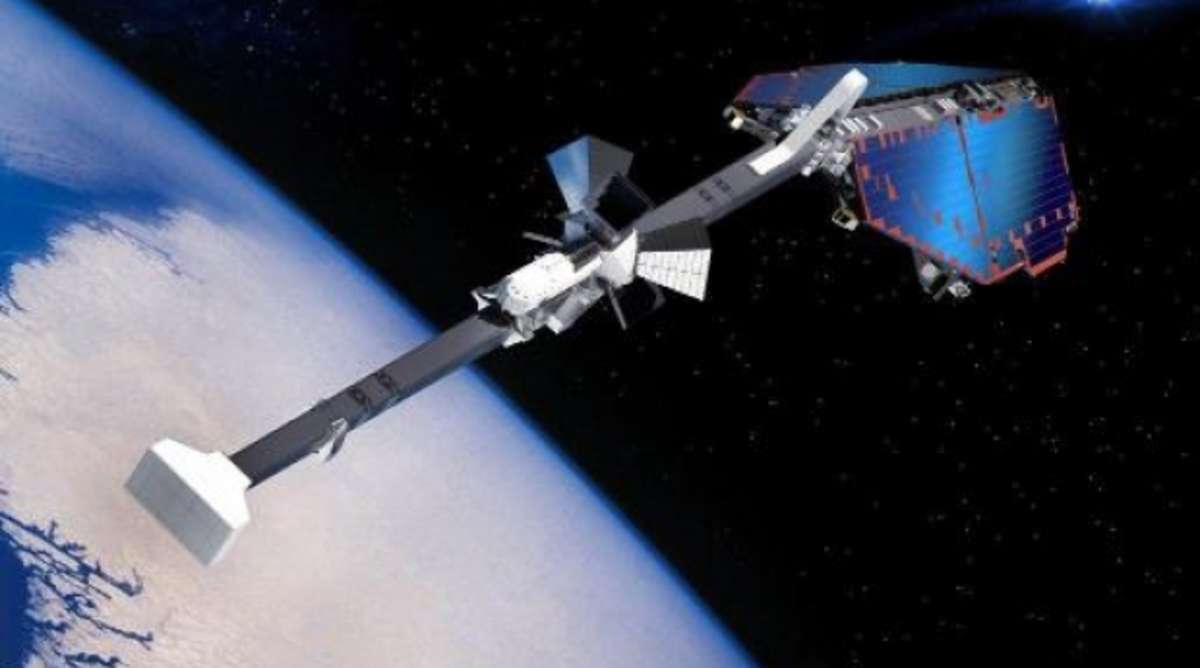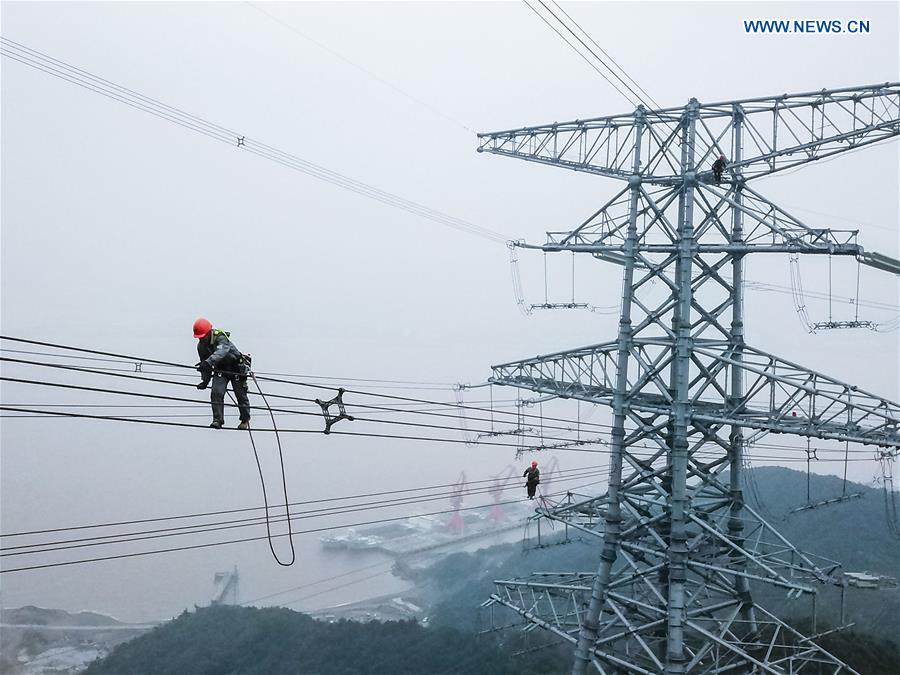Sakshi Tiwari
China has developed what it calls a Satellite Quantum System in a bid to combat any adversary intrusion into its power infrastructure. The country boasts the world’s largest national power grid.
As critical infrastructure gets increasingly integrated with data and network systems, there remains an enhanced risk of these systems being compromised in the case of a confrontation.
China seems to have gauged the threat and has now devised a network against it, being a power-dependent developing economy. It has reportedly developed the world’s first quantum satellite, integrating its ground-based critical infrastructure with space-based quantum technology.
“China has built a quantum communication network in space to secure its electric power grid from cyber-attacks,” said the scientists involved in the project, as reported by SCMP.
 China’s Quantum Satellite (via Twitter)
China’s Quantum Satellite (via Twitter)A portion of the network connects Fujian’s electricity system to a national emergency command center in the Chinese capital, Beijing. Fujian is a southeastern province and is in close proximity with Taiwan. Beijing and Fujian are separated by about 2,000 kilometers (1,243 miles).
According to researchers with the State Grid Information and Communication Branch, which is in charge of creating the national power grid’s information infrastructure, building an optical cable of that length for quantum communication would have been very costly.
In order to build a more risk-proof and cost-effective system, the Chinese have turned to Mozi, the world’s first quantum satellite to relay the quantum key for data encryption that, by the laws of physics, could not be hacked.
This is indicative of China’s threat perception in the backdrop of growing belligerence with the island state of Taiwan, which Beijing sees as a breakaway province and aims to eventually reunite with its mainland.
The western support to Taiwan could be a pre-cursor to China integrating the south-eastern province’s grid with that of its Central Response Command. The move could also be interpreted as an attempt to send across a message to its western rivals that it is ready for all eventualities with high-tech modern solutions.
The ultra-secure communication channel was used in a drill in May this year to allow central government officials to assume control of the power grid operating in the coastal province without their directives being exposed to tapping or manipulation by a third party. This is where the quantum satellite-led central response system assumes significance.
China’s ‘Quantum’ Leap
The reports of China developing the first-ever quantum satellite-based ground stations emerged in January 2020. The satellite, Mozi, was however unveiled in 2016 itself.
The Hong Kong-based publication, South China Morning Post had reported in January last year that “Chinese scientists invented a quantum satellite ground station that fits inside a family car and can broadcast ultra-secure messages anywhere in the world.
The transportable device, which was designed by China’s University of Science and Technology, weighed around 80 kilograms. It was reported to have the capability to connect to the Chinese Academy of Sciences’ quantum satellite, Mozi, and receive encryption keys in the form of entangled light particles with the addition of a 28cm (11 inches) telescope.”
This report attempted to explain how the quantum satellite integrated network would work on the ground. Even though the satellite system and ground infrastructure were ready last year, its application in the security of the power grid was not immediately revealed.
Mozi developed by China in 2016 for scientific studies soon started to find a growing variety of commercial and military applications and was merged with the dual technology ecosystem.
National security concerns spurred the application of quantum communication technology in the energy sector, according to senior scientist Zhao Ziyan and his colleagues in a report published last month in the industry journal, Electric Power Information and Communication Technology.
Chinese scientists built the world’s first integrated quantum communication network, which combined over 700 optical fibers on the ground. It has two ground-to-satellite links to achieve quantum key distribution for users across the country across a distance of 4,600 kilometers, said scientific publication Science Tech Daily earlier this year.
The team from the University of Science and Technology of China in Hefei, led by Jianwei Pan, Yuao Chen, and Chengzhi Peng, published a paper in the journal ‘Nature’ detailing their progress toward the global, practical deployment of such a network for future communications.
Quantum communication, unlike traditional encryption, is deemed un-hackable and hence the future of secure information transport for banks, power grids, and other industries.
Quantum key distribution (QKD) is at the heart of quantum communication, as it employs the quantum states of particles — such as photons — to create a string of zeros and ones, with any eavesdropping between the sender and receiver changing this string or key and being detected instantaneously.
China boasts the world’s largest national power grid, transmitting 7,500 tera-watt hours of electricity every year, more than the combined networks of the US, India, Russia, and Japan.
System operators have deployed artificial intelligence, 5G, and other cutting-edge ways to keep the quickly expanding network efficient and stable, but the power grid has become more vulnerable to attacks as a result of its increased reliance on machines and data. China has adopted new measures to protect its power infrastructure from potential cyber-attacks.
China has adopted new measures to protect its power infrastructure from potential cyber-attacks.
 China has adopted new measures to protect its power infrastructure from potential cyber-attacks.
China has adopted new measures to protect its power infrastructure from potential cyber-attacks.According to Zhao’s team, a hacker infiltrating the power communication network and decoding the directives might inflict large-scale blackouts or other damage. This is a breakdown that the Chinese can ill-afford.
Additionally, cyber attacks have in recent years stalled nuclear plants of some countries, banking systems of some and power grids of a few others. Ironically, India’s financial capital Mumbai had suffered a massive power outage last year, which was attributed to Chinese hackers.
Nevertheless, with the scope and size of a mammoth country like China, physically integrating the grid with all its components on the ground would be a very man-power intensive and extremely expensive endeavor with the possibility of cyber attack not completely absent. Hence, a quantum satellite communication system has given a boost to Chinese efforts at critical infra security.
How Does US Fare In The Quantum Race?
Following China’s Micius (Mozi) satellite demonstration in 2017, American politicians responded by investing hundreds of millions of dollars in quantum information science through the National Quantum Initiative, according to the website Scientific American.
Both countries appear to contribute more than $100 million each year to research. China has more total patents in quantum technology, but the United States is not far behind. China, of course, has a more advanced quantum network.
Quantum research in China is nearly completely state-funded, with only a few universities and enterprises participating. It has been pursued very earnestly so as to be made a part of its overall security architecture.
Even though there has been a dedicated race between China and its principal adversary United States in the realm of quantum technology, the former has established a precedent that could be adopted by the most technologically advanced countries in the world.
No comments:
Post a Comment